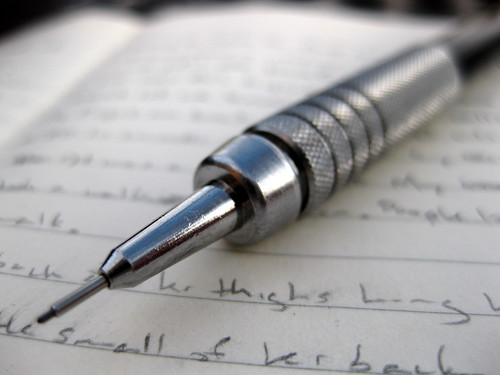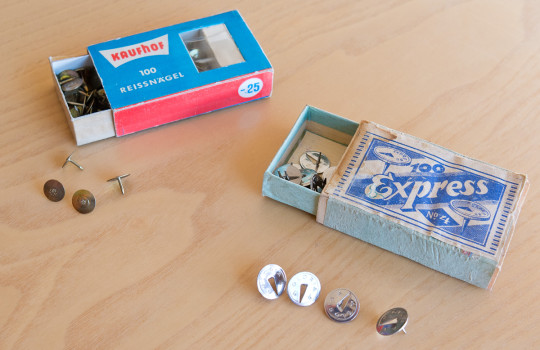Today: a guest blog post by Alice Jenkins about the origins of the mechanical pencil. You might have already seen some of her guest blog posts in other stationery blogs.
Origins of the Mechanical Pencil
The mechanical pencil is a seemingly simple utensil whose invention and development actually took decades. Being an ever-sharp pencil it was at one time thought to be the perfect tool for basic writing and to some people, still is. The convenience of allowing the user to draw consistent lines and never need sharpening is largely taken for granted as this pencil was not always as refined as it is today.

(picture: Eric Jusino | flickr | CC BY-NC 2.0)
1822: Invention
The actual mechanical pencil was invented and patented in England by Sampson Mordan and Gabriel Riddle in 1822. What they had was more or less a refillable lead holder rather than a sophisticated mechanical pencil. Those who frequently used them would commonly carry around uniform pieces of lead in their pockets. Back then there was a shortage of the soft graphite that was used in regular pencils and the importation of lower quality graphite was needed to meet demands. This adaptation was one of the main sources of inspiration for Mordan and Riddle to invent such a device.
1860: Along Comes Faber
In 1860, a German named A.W. Faber invented a more advanced model to help drafters in architecture. Faber, an already renowned maker and manufacturer of writing utensils designed a holder that was more hollow and allowed for a longer lead to be fitted. A year later, Faber invented and patented the twist locking-clutch mechanism.
1862-1899: Upgrades and Improvements
Many small upgrades were implemented in the later part of the 19th century. The most notable of which were the spring-loaded pencils developed in 1877 and the twist-feed mechanism which was introduced 1895. However, it wasn’t until 1915 that the mechanical pencil was truly sprung on the world.
1915: No Longer a Lead Holder
Up until this point the mechanical pencil had been called a number of things, mostly some variation of lead holder or push pencil. Then in 1915, two men in two different countries came out with designs that would change the mechanical pencil forever. Tokuji Hayakawa, a metal worker in Japan, implemented the use of a metal shaft, a screw-based mechanism, and sharp lead. Introduced as the Ever-Ready Sharp Pencil, the new design actually did not sell well overnight as many were unfamiliar to the metal body of the pencil and we’re hesitant to buy into it. However, after a major company in Tokyo and Osaka put in large orders, the new pencil began to fly off the shelves. Years later, Hayakawa would get his company name form that pencil, Sharp. At the same time in the United States, a man named Charles Keeran from Illinois designed a ratchet-based mechanism in which the lead is held by two or three jaws at the tip of the pencil. The user could then press a button with their thumb at the opposite end and push the lead forward as the momentarily separate. Both of these men are credited with the invention of the true “Mechanical Pencil” and usually have their separate stories combined into one given their significance and bizarrely similar timing.
Today mechanical pencils are widely used throughout all businesses and educational institutions. “Lead Holders” are still used but primarily in architectural design and are clearly distinguished from your everyday mechanical pencil.
Alice Jenkins, is a writer who has always had a passion for penmanship and writing history. She writes for pensXpress, a leading supplier of personalized pens for dedicated writers and pen enthusiasts.


